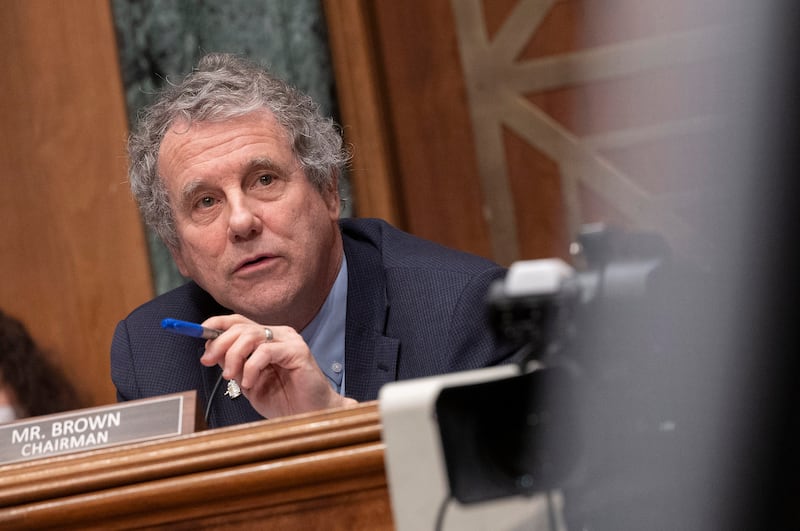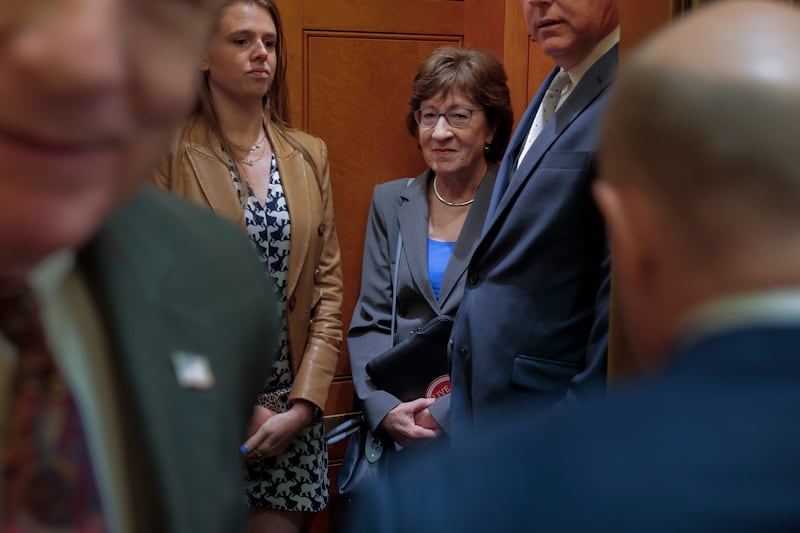The midterm elections are the Democrats’ best chance to take back power in Washington, and to stop the slide to autocracy that President Trump has set in motion. If historical patterns hold, with the party in power losing seats, control of the House is potentially within reach. (A wrinkle? Texas Republicans’ redrawing of the state’s map to yield five more GOP districts, but California—and potentially more blue states— are planning to counter with similar plans to create more Democratic seats in turn.)
The Senate, however, is tougher to flip, and contrary to voters yearning for new voices and fresh faces, Democrats are recycling old warhorses in key states: Ohio, with 72-year-old Sherrod Brown making another run for the Senate after narrowly losing his seat last year, and North Carolina, where popular term-limited governor Roy Cooper, 68, is running for an open seat.

Yes, both politicians have proven themselves in red states. But what about all those polls and focus groups finding the Democratic Party is at its lowest ebb ever? The base is keen—desperate—for generational change. Can Democrats square the circle? Can what’s old be made new again?
History cautions against recycling too-well-worn candidates. Former Vice President Walter Mondale came out of retirement at 74, almost two decades after losing 49 states to President Reagan, to try to salvage a Senate seat for Democrats in Minnesota after incumbent Senator Paul Wellstone died in a plane crash just eleven days before the 2002 election. It was a nice try, but it didn’t work—especially after his Republican opponent launched a slogan, “The future is now,” that clearly jabbed at Mondale’s age.
Indiana Democrat Evan Bayh, a former two-term governor and two-term senator, jumped back into the fray in 2016, four years after leaving the Senate, to try to win the seat of a retiring Republican. The voters who once loved him gave him a thumbs down, questioning his commitment to the state and its values after a long career in swampy Washington D.C.
In fairness, Brown and Cooper are recent retreads. Both were in office until January of this year. “It’s a hunger for newness versus a hunger to win, and in states like these it’s not wrong to look at who’s been successful,” explained Jessica Taylor with the non-partisan Cook Political Report.
Getting elected in a red state is former North Carolina Governor Roy Cooper’s superpower. He won twice with Trump on the ballot, and Taylor said she can’t find another governor who can match that. (Granted, he was elected to a second term by the slimmest of margins—10,277 votes or .22 percentage points.)

His Republican opponent next year, Michael Whatley, is a former head of the Republican National Committee and head of the North Carolina Republican Party, and was active in Trump’s effort to overturn the 2020 election.
Cooper first won election in 2016 when North Carolina was the center of a debate over its so-called “bathroom bill.” The backlash against the measures to bar trans people from using public bathrooms that aligned best with their gender identity caused sports teams to cancel events and businesses to pull out of the state. But almost a decade later, “the issue has reversed and it’s not good for Democrats,” said Taylor.
“I’m not sure any other Democrat could put this seat in play,” she continued of Brown’s candidacy in Ohio, noting that the Cook Report changed its rating for the state’s senate seat—once held by J.D. Vance—from Solid Republican to Leans Republican when he entered the race. “He makes it competitive, but because it’s a special election, (if he wins) he has to run again in two years,” she added. At this point, Brown will be in his late seventies.

A crowd favorite known for his rumpled appearance, Brown is bullish about his chances against former lieutenant governor Jon Husted, Brown has long identified with pro-union, working people’s politics. It would be hard to outshine him on the progressive left, which is where Dems’ ideological divide typically surfaces.
Michigan is where that divide will be on full display. Top contenders for the Democratic nomination are Rep. Haley Stevens, an Obama protege and strong Biden backer, and Mallory McMorrow, a state legislator and progressive mom who went viral when she challenged the legislature on LGBTQ issues. Then there’s Abdul El-Sayed, a former Detroit health official who ran against Gov. Gretchen Whitmer in 2018. He’s gaining more traction this time around because he is outspokenly pro-Palestine in a state that has a large population of Muslims and a strong youth anti-war movement.
Winning is the name of the game, and there’s no one-size-fits-all candidate. Dems need to pick up four seats and there are no gimmes. Brown and Cooper make seats competitive; Michigan is winnable if the most electable Democrat wins the primary. And in Maine, where Democrats will try to dislodge Republican Susan Collins from winning a sixth term, the party is fielding Graham Platner, a 40-year-old oyster farmer and former Marine who served tours in Iraq and Afghanistan.

Platner is the kind of “new” candidate who evokes the tried-and-true of yesteryear. He’s a self-described waterman who works with his hands, a competitive pistol shooter and he has an extensive combat background. He identifies with Bernie Sanders in highlighting the needs of working people though he declines to call himself a progressive. He enters what will be a crowded primary as voters weigh which version of “new” or “old” is in next year.
Fresh faces Brown and Cooper are not, but they’re fighting for voters disillusioned by Trump’s promises on the economy and cost of living. They have a proven ability to deliver over the long haul for working class people, and they’re betting that the old can become new again after two years of Trump’s grandiose rhetoric and failed promises.
The post Opinion: Can Democrats Turn Golden Oldies Into the Midterms’ Shiny New Thing? appeared first on The Daily Beast.




